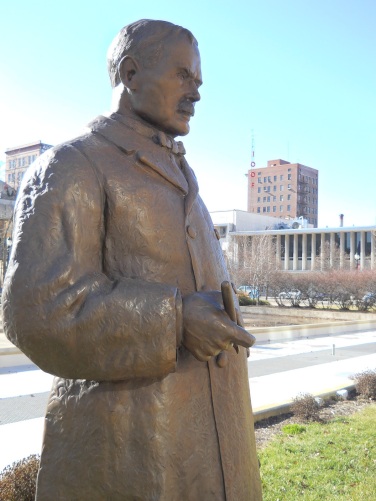[Edit: The images are still failing to appear. I’m working on it.]
On Tuesday I made my second solitary drive into Springfield. The previous afternoon I had checked to see if the historical center was open (it wasn’t). I also briefly went into the public library, seen here.

I also went into a nearby building just on account of it looking relatively aesthetic. I saw a sign that indicated there was a second-hand book store. I went in and a tall man showed me where the books were kept, some in shelves and others still in boxes. I skipped over the fiction and the many cookbooks I saw, and after a while chose five history books. I brought them to the counter, where the tall man looked down for a split second and cheerily said: “five dollars!” I must have looked confused, because I was. “I’m feeling generous.” It turned out this building was the old library, and that the brick building (pictured above) was the new one. So the prettier building was converted into a literacy center. During our brief conversation, the man said he had taught business English in Chile for two years.
I walked across the street past some buildings, a small church, and those statues to Clark and Toulmin carrying my pile of books toward the car. I then drove around looking for food. I settled on the only place I could find; a pizza place. I ordered, sat, drank water, and read my book. The woman who took my order and then brought me the pizza saw me reading my book on Russians and said in a Midwestern-y accent: “Aww, doing homework? That’s no fun” while smiling. She returned later to see if the pizza was satisfactory. But of course it wasn’t homework, and I was in fact quite entertained reading about Perestroika.
So returning to this same area the following day, I made it my sole mission to see the historical center.

I walked in where two girls about my age told me where to go. It looked like they were just waiting for someone to enter. They asked me to sign my name, and then I went inside.










I flew back to Boston on the morning of December 7th. Frost covered all the empty corn fields.





























